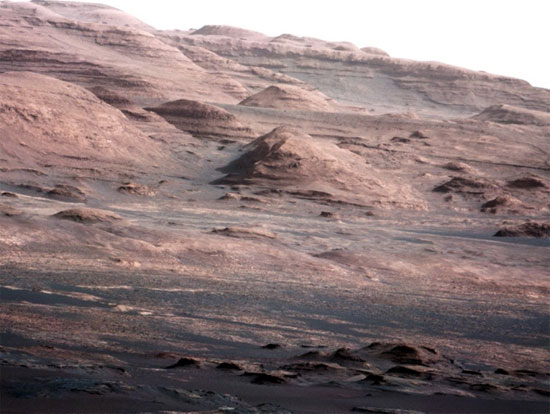Hopelessly hoping to find life on Mars
Hope to find evidence of life on Mars by scientists The NASA Aeronautics Agency (NASA) has taken a step back when the latest information sent by Curiosity probe shows methane gas in the atmosphere of Red planet lower than previously forecast.
>>>Life in the earth comes from Mars
In the September 19 report, NASA led the analysis of data transmitted from the Curiosity vessel to show that the methane gas density in Mars atmosphere is only about 1.3 ppb (unit of measurement of rare gas density in gas. book).
This finding is much lower than the prediction made in March 2003, which states that the Red planet may have about 19,000 tons of methane gas, a gas produced by biological processes.

Photo: nydailynews.com
This finding also means that NASA almost has to eliminate the hypothesis of the existence of life on Mars and the prediction given earlier may be due to confusion in decoding the observed images from glass. Telescope set on Earth.
An author of the study, Sushil Atreya of the University of Michigan, said that there is no scientific explanation for the sudden disappearance of a large amount of methane in the air, so the discovery of Curiosity could comes to claim that previous speculation about the existence of large amounts of methane on Mars is misleading.
However, the head of NASA's Mars exploration program Michael Meyer argues that the collapse of the methane hypothesis does not mean that there is no longer the possibility of finding life on the Red planet. Instead, new discoveries will help better orient future space science research.
The Curiosity board landed on Mars in August 2012. Earlier, the ship had found many signs that the planet once existed with water and a supportive environment for microbiological life. Currently, Curiosity is on its way to conquer an 8km journey to the main exploratory location on Mars, Mount Sharp.
NASA said the study of this mountain is one of the main tasks in the two-year mission of the Curiosity vessel and can help determine when Mars survives life.
- Mars has life?
- Curiosity's ability to find life on Mars is decreasing
- Found many signs of life on Mars
- Life may have existed 700 million years on Mars
- Find evidence of groundwater around Mars?
- Mars can nourish life
- More than 200,000 people want to settle in Mars
- Aliens may have been on Mars 3.8 billion years ago
- Result of NASA press conference: Find traces of life on Mars in the past, and may still be present
- Discover the best location to search for life on Mars
- India is about to launch a spacecraft to find life on Mars
- NASA suddenly announced shock about life on Mars
 Van Allen's belt and evidence that the Apollo 11 mission to the Moon was myth
Van Allen's belt and evidence that the Apollo 11 mission to the Moon was myth The levels of civilization in the universe (Kardashev scale)
The levels of civilization in the universe (Kardashev scale) Today Mars, the sun and the Earth are aligned
Today Mars, the sun and the Earth are aligned The Amazon owner announced a secret plan to build a space base for thousands of people
The Amazon owner announced a secret plan to build a space base for thousands of people